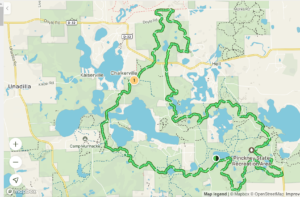
(Chelsea Update would like to thank Tom Hodgson and the Waterloo Natural History Association for the photos and information in this story.)
Ground hog day is fast approaching. Will or can the groundhog tell us what the remainder of the winter will be like? Probably not, but if the speculation provides everyone a little diversion from the winter blahs, what’s the harm?
Michigan groundhogs are the largest members of our squirrel family, and are true hibernators. They disappear into their winter burrows in October and usually do not re-appear above the surface again until March or April.
Therefore, the chances of one being awake, above ground, and looking for its shadow on Feb. 2 are pretty remote. But, they are quite remarkable mammals just the same.

During the active season, a groundhog’s resting heart rate is about 130 beats per minute. During hibernate that rate drops to as little as four beats per minute. Its normal body temperature of about 100 degrees Fahrenheit drops to about 45 degrees during hibernation. These adaptations are the groundhog’s method of solving its winter food shortage problem.
The bulk of the groundhog’s diet consists of leafy greens and grasses that are unavailable most of the winter. Not a single morsel of food passes a groundhog’s lips from October through March. Hibernation lowers the groundhog’s need for food, enabling it to fast for up to six months and still avoid starvation.
Even with these extreme measures, the average groundhog loses 30- to 40-percent of its body weight each winter.
Groundhogs and vegetable gardens are not a good mix, as they are waking up very hungry about the time we are planting our early peas and lettuce.
They do have some redeeming qualities, however. Their abandoned burrows provide winter shelter for rabbits, hibernating reptiles, skunks, opossums, and other wildlife.















